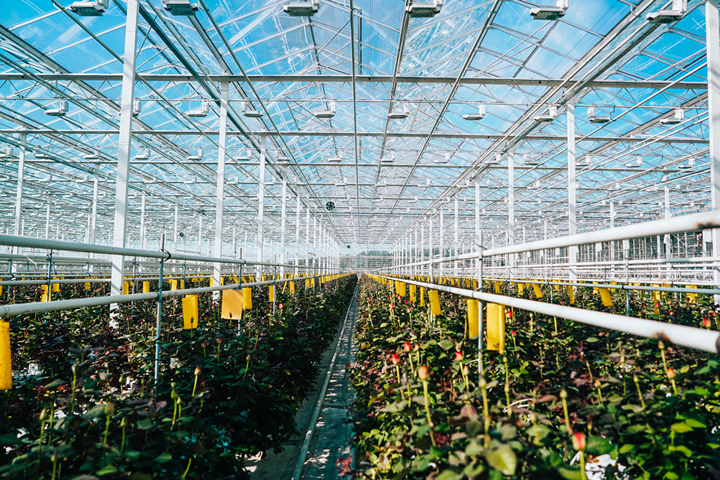How to Secure Your Farm Surveillance Cameras

Every day, farmers grapple with safeguarding their farms and livestock against theft, vandalism and predator attacks. Installing CCTV systems presents a viable security solution to these persistent threats, allowing farmers to monitor multiple locations in real time.
The presence of surveillance cameras may often be enough to deter potential crime. However, these systems also need protection from both physical threats and cyberattacks. What can agriculture professionals do to secure their surveillance systems?
The Importance of Farm Security
Farms may be in rural areas, but that doesn’t exclude them from untoward acts. If anything, the remoteness of farmlands and equipment complicates things when crime occurs. Police stations may be located several miles away, so law enforcement is unable to respond in a timely enough manner to stop the perpetrators from getting away.
This is the prevailing scenario in most farms across the globe. In Australia, 81% of rural farmers have fallen victim to crime while as many as 88% were victimized multiple times.
Ensuring robust farm security is crucial because criminal activities don't just affect the immediate victim. When agricultural systems experience theft or vandalism, food production and supply suffer drastically.
CCTV Systems Are Vulnerable to Attacks
Surveillance cameras have emerged as a practical measure for keeping criminals at bay. When mounted at suitable locations, these systems can provide 24/7 monitoring of the property, ensuring that it will be easier to identify and apprehend the perps even if a crime occurs.
However, as with most tech solutions, CCTV systems are susceptible to cyberattacks and physical defacement. Most surveillance cameras are connected to the internet, meaning anyone with the right access can manage all recorded or live footage remotely. Some older models lack the security features to prevent unauthorized access, making them especially vulnerable to hackers.
As systems become more interconnected, the risk of cybercriminals using surveillance cameras as an attack vector increases. Such instances are nothing new. There are countless heist movies and TV shows where the robbers gained entry by tapping into the video monitoring feed.
Inclement weather can also impact the security efficiency of CCTV cameras. Whether it's heavy rain, ice, snow or heat, extreme conditions can cause components to fail.
How Farmers Can Secure CCTV Systems
In a perfect world, farmers wouldn't need to protect surveillance cameras in the first place, but since current conditions are far from ideal, these safety tips will have to suffice.
1. Update the Camera's Firmware
Most modern CCTV systems feature user-upgradeable firmware. Manufacturers typically release new updates to address recently discovered security vulnerabilities, which is why downloading and installing the latest firmware version is paramount. Users can check the manufacturer's website for the most recent patches and install them through the system’s admin console.
2. Keep the System Within a Separate Network
Assigning non-routable internal IP addresses to each surveillance camera and keeping them all contained on a local network reduces the risk of their exposure to prying eyes. Local, private networks are incredibly difficult to access from outside, making them a more secure alternative. Remember to turn on WPA3 or WPA2 encryption for wireless networks to add another layer of security.
3. Assign Passwords to the Cameras
Many CCTV systems have default settings requiring a password to access recorded footage. Farmers or system administrators must enable this function and assign robust passwords to the cameras. A strong password should also be paired with multi-factor authentication (MFA) to ensure a more well-rounded cybersecurity infrastructure. MFAs are crucial as they can stop 99.9% of hack attempts on protected networks and accounts.
4. Upgrade the Surveillance System
Older cameras and other monitoring equipment running on legacy frameworks are more vulnerable to cybersecurity risks. At some point, upgrading to a better system is the only practical way forward. Most newer devices come equipped with AI-driven security features, including proactive threat-hunting and enhanced facial recognition to better address evolving risks.
5. Place Cameras Out of Reach
Surveillance cameras closer to the ground are more susceptible to physical damage. The most common places to install surveillance cameras around the farm are the entrances, exits, storage and livestock areas. However, it’s important to place these devices at strategic spots where they can capture the clearest views of the location while being out of easy reach to just anyone.
What to Look for in Surveillance Cameras for Farms
Installing a CCTV system on a farm is a no-brainer, especially for farmers who have experienced first-hand the sorrow of having their livestock or equipment stolen. The most important features to look for in a surveillance camera include:
- Weatherproofing: Make sure the cameras have a minimum IP66 rating, which means the device is protected from dust and exposure to 12.5mm and below water, which should be able to withstand regular seasonal changes. The higher the rating, the greater the level of protection. Farmers can always go for higher-rated cameras, especially if they live in areas with heavy rainfall.
- Night vision: A security camera is no good if it can’t work at night. That’s when most rural crimes occur, so investing in cameras equipped with infrared vision for clear recording makes sense.
- Long-range capacity: Farms cover vast expanses of land, so high-end cameras capturing footage from a great distance are essential.
- Solar power: Surveillance cameras need to run uninterrupted all year long. The best energy source for that is solar since it's perpetually renewable and doesn't add to the farm’s monthly bills.
Safeguard Farm Surveillance Cameras
Farmers spend their time working the land, raising animals and supplying food. The last thing they should worry about is the possibility of threat actors taking advantage of their surveillance systems to commit bigger crimes. Agriculture professionals can leverage these simple security tips to build a more resilient video monitoring system across the farm and protect cameras from vandalization.
Comments (0)
This post does not have any comments. Be the first to leave a comment below.
Featured Product

